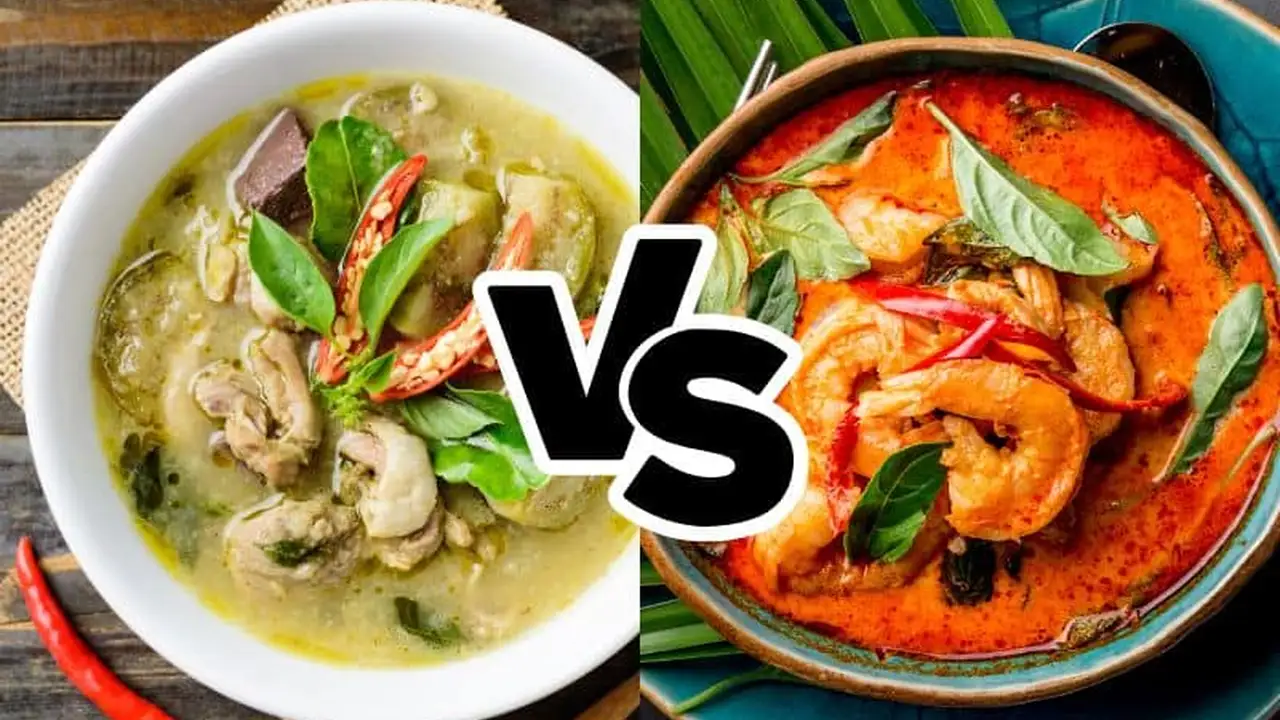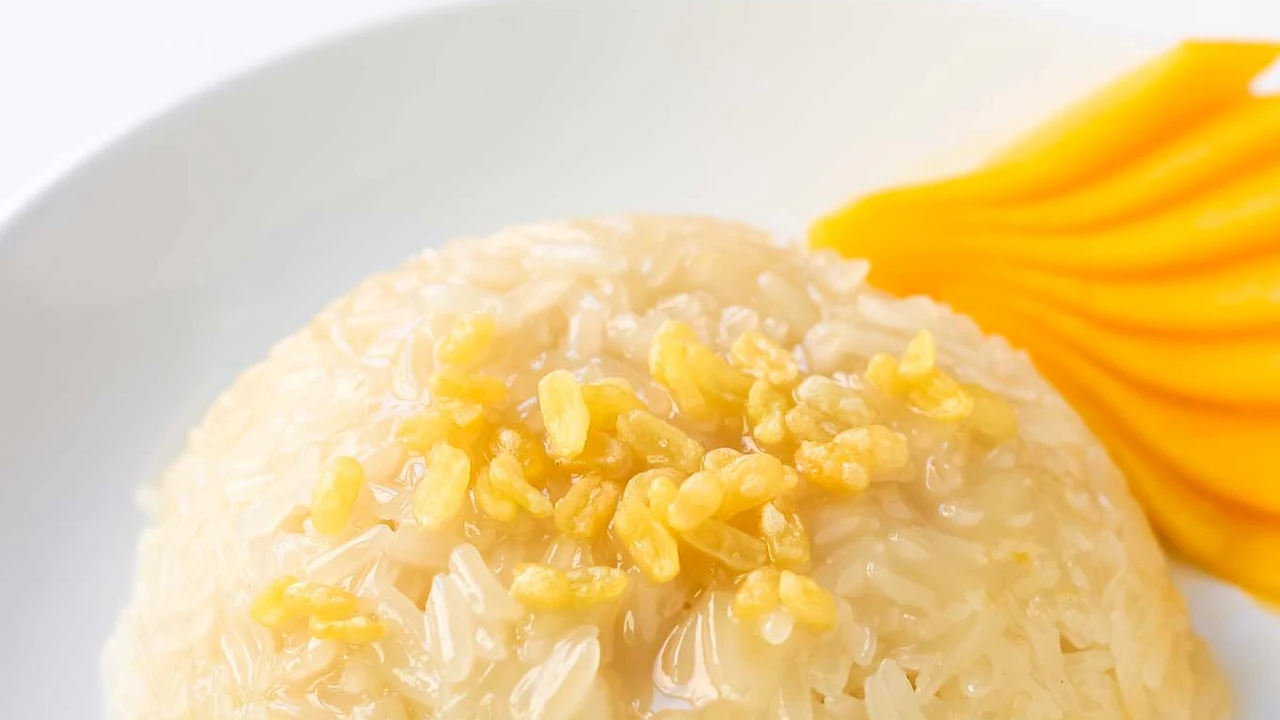Green Curry vs. Red Curry: Understanding the Differences

Green Curry vs Red Curry A Flavorful Showdown
Alright foodies, let's dive headfirst into the vibrant world of Thai cuisine! We're talking curries today, specifically the two heavy hitters: Green Curry and Red Curry. Both are delicious, both are packed with flavor, but they're definitely not the same. So, what exactly sets them apart? Let's break it down.
Key Ingredients Unveiling the Secrets Behind the Colors and Flavors
The most obvious difference, of course, is the color. But that color isn't just for show; it's a direct result of the ingredients used in the curry paste. Let's take a closer look:
Green Curry Paste The Star of the Show
The defining ingredient here is, you guessed it, green chilies! These are typically fresh green chilies, which contribute to the vibrant color and a slightly brighter, fresher flavor. Other common ingredients include:
- Green chilies (obviously!)
- Lemongrass
- Galangal (a type of ginger)
- Kaffir lime leaves
- Cilantro roots
- Garlic
- Shallots
- White peppercorns
- Shrimp paste (optional, but adds a lot of depth)
Red Curry Paste A Deeper, Richer Experience
Red curry paste gets its color and heat primarily from dried red chilies. These chilies are often soaked and rehydrated before being ground into the paste, which gives the curry a deeper, richer flavor profile. Expect to find these ingredients:
- Dried red chilies
- Lemongrass
- Galangal
- Kaffir lime leaves
- Cilantro roots
- Garlic
- Shallots
- White peppercorns
- Cumin
- Coriander seeds
- Shrimp paste (again, optional but recommended)
Spice Level Setting Your Taste Buds Alight
Generally speaking, green curry is considered to be spicier than red curry. This is because green chilies tend to pack more heat than their dried red counterparts. However, spice levels can vary greatly depending on the specific chilies used and the amount added to the paste. Always taste before you add more!
Flavor Profile A Symphony of Tastes
Beyond the spice, the overall flavor profiles of green and red curry are quite distinct.
Green Curry Fresh and Aromatic
Green curry is known for its bright, fresh, and aromatic flavor. The green chilies, lemongrass, and kaffir lime leaves contribute to a vibrant, almost citrusy flavor. It's often described as being slightly sweeter and more herbal than red curry.
Red Curry Rich and Robust
Red curry is richer, deeper, and more robust. The dried red chilies, cumin, and coriander seeds create a more complex and earthy flavor. It's often described as being slightly sweeter and more savory than green curry.
Main Ingredients Protein and Vegetables Galore
Both green and red curry can be made with a variety of proteins and vegetables. Common choices include:
- Chicken
- Beef
- Pork
- Shrimp
- Tofu
- Eggplant
- Bamboo shoots
- Bell peppers
- Green beans
- Thai basil
The choice of ingredients often depends on personal preference and regional variations.
Coconut Milk The Creamy Base of Thai Curry
Coconut milk is a crucial ingredient in both green and red curry. It adds creaminess, richness, and a subtle sweetness that balances out the spiciness of the chilies. Different levels of fat content in coconut milk can also affect the overall texture and flavor of the curry. Full-fat coconut milk will create a richer, creamier curry, while light coconut milk will result in a lighter, less decadent dish.
Serving Suggestions Rice Noodles and Beyond
Both green and red curry are typically served with steamed jasmine rice. The rice acts as a neutral base that soaks up the flavorful sauce and provides a satisfying contrast to the spiciness of the curry. Other popular accompaniments include:
- Thai jasmine rice
- Rice noodles (especially thin rice noodles called vermicelli)
- Roti bread (for dipping)
- Fresh herbs (such as cilantro and Thai basil)
- Lime wedges (for adding a touch of acidity)
Product Recommendations Bring the Flavors Home
Want to try making green or red curry at home? Here are a few product recommendations to get you started:
Maesri Brand Curry Paste A Budget Friendly Option
Maesri is a popular brand of Thai curry paste that's widely available and relatively inexpensive. Their green and red curry pastes are both good starting points for beginners. They offer a decent balance of flavor and spice, and they're easy to find in most Asian grocery stores. Expect to pay around $3-$5 per can. Usage Scenario: Perfect for quick weeknight meals when you don't have time to make your own curry paste from scratch.
Aroy-D Coconut Milk The Creamy Dream
Aroy-D is a well-regarded brand of coconut milk known for its high fat content and creamy texture. It's a bit more expensive than some other brands, but the quality is worth it. Aroy-D coconut milk will add richness and depth to your curry. Expect to pay around $2-$3 per can. Usage Scenario: Ideal for when you want to create a truly decadent and flavorful curry.
Thai Kitchen Fish Sauce Umami in a Bottle
Fish sauce is a staple ingredient in Thai cuisine, and Thai Kitchen is a reliable brand that's readily available. It adds a savory, umami flavor that enhances the overall taste of the curry. Use it sparingly, as a little goes a long way. Expect to pay around $5-$7 per bottle. Usage Scenario: Essential for adding depth and complexity to your curry, especially if you're not using shrimp paste.
Comparing Curry Pastes Maesri vs Mae Ploy
While Maesri is a good budget option, Mae Ploy is a step up in terms of flavor and authenticity. Mae Ploy curry pastes are made with higher-quality ingredients and have a more complex and nuanced flavor profile. However, they are also more expensive, typically costing around $5-$8 per can. If you're serious about making authentic Thai curry, Mae Ploy is worth the investment. Maesri is great for convenience and cost savings, Mae Ploy shines in flavor complexity.
Where to Buy Thai Ingredients Your Shopping Guide
You can find most of these ingredients at your local Asian grocery store. Some larger supermarkets may also carry a limited selection of Thai ingredients. Online retailers like Amazon are also a convenient option, especially for harder-to-find items.
Cooking Tips and Tricks Mastering the Art of Thai Curry
- Taste as you go: Adjust the spice level and flavor to your liking.
- Don't overcook the vegetables: Aim for tender-crisp.
- Use fresh herbs: They add a burst of flavor and aroma.
- Let the curry simmer: This allows the flavors to meld together.
- Serve with a side of rice: Jasmine rice is the classic choice.
Beyond the Basics Exploring Variations and Regional Differences
Thai cuisine is incredibly diverse, and there are countless variations of green and red curry. Some regions use different types of chilies, while others add unique ingredients like pineapple or peanuts. Don't be afraid to experiment and create your own signature curry!
Enjoy Your Culinary Adventure
So, there you have it! A comprehensive guide to green curry vs. red curry. Now go forth and create some delicious Thai food! Remember to experiment, have fun, and most importantly, enjoy the process.
:max_bytes(150000):strip_icc()/277019-baked-pork-chops-with-cream-of-mushroom-soup-DDMFS-beauty-4x3-BG-7505-5762b731cf30447d9cbbbbbf387beafa.jpg)






